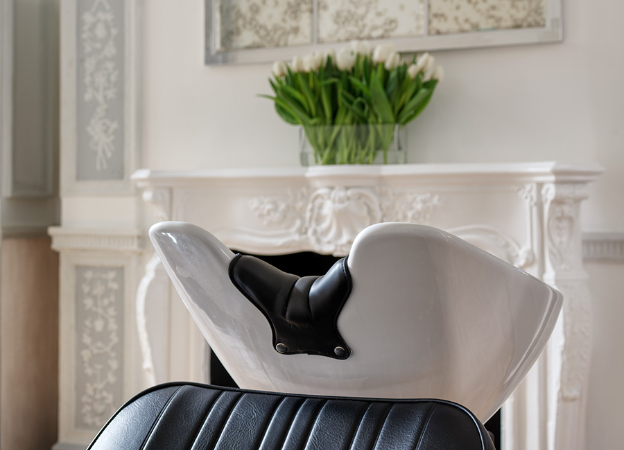But how do they work? What does the process involve? And are you an eligible candidate? Read on to find out more.
How do Hair Transplants Work?
Every hair on your body has (and knows) its own identity — whether it is a scalp hair, an eyebrow hair, a leg or arm hair, and so on. Transplanted hairs will continue to grow in the way they used to, no matter where on the body they are placed. For example, an eyebrow hair will still grow like an eyebrow hair even if it is transplanted to your head. This is the theory behind hair transplants.
When you transplant a scalp hair and hair follicle, it will keep the characteristics of the scalp area from which it was taken. The sides and lower part of the head do not usually go bald, even in the most advanced cases of male and female pattern hair loss. This is because the follicles in these areas are not affected by male hormones in the same way as follicles in other areas of your scalp. So, when you remove follicles from here and place them elsewhere, they will continue to grow just as they were before.
Which Types of Hair Loss are Eligible for a Hair Transplant?
Transplants are suitable for some types of hair loss, but not all of them. Your Trichologist or transplant surgeon will be able to advise you regarding your eligibility for treatment.
Hair transplants are most commonly used in the treatment of Male and Female Pattern Hair Loss. In these cases, hairs are transplanted from the rear and sides of the scalp (sometimes referred to as the ‘permanent’ area, since these hairs grow indefinitely throughout a person’s lifetime) to the top, frontal and crown regions (sometimes referred to as the ‘non-permanent’ area, since this can be affected by Male and Female Pattern Hair Loss).
As well as Male and Female Pattern Hair Loss, hair transplantation may also be used for:
- Traction / mechanical hair loss
- Hair loss due to burns
- Hair loss following plastic surgery, such as facelifts
- Permanent hair loss following radiotherapy
Hair transplantation can also be used to create or thicken eyebrows if they have been lost, depending on the cause. However, if transplanted from the scalp, they would retain the characteristic of growing long, so would need to be regularly cut; unlike normal eyebrow hairs, which have a much shorter growing phase!
Hair transplants are not suitable for hair loss as a result of the following conditions:
- Primary Scarring Alopecia (resulting from an autoimmune condition) such as Frontal Fibrosing Alopecia
- Alopecia Areata
Hair Transplant Methods
There are two main types of hair transplants used today:
- FUT (Follicular Unit Transplantation)
- FUE (Follicular Unit Extraction)
Each method has its own set of advantages and disadvantages. You and your surgeon will be able to decide together on which is best for you. Expect costs to start from around £5,000.
FUT (Follicular Unit Transplantation)
- Also known as the ‘strip method’ as a strip of skin and hair is removed from the donor area at the back of the scalp.
- The donor strip is divided into grafts (each containing 1-3 hairs) under a microscope, then transplanted into small incisions at the recipient site.
- Around 1500-1600 grafts can be transplanted in one operation.
- Incision closure techniques at the donor site have become very sophisticated but will still leave fine scarring when healed. This scarring is likely to be visible if the patient decides to sport a very short hairstyle.
- No need for the patient to shave their head before the procedure.
FUE (Follicular Unit Extraction)
- Using a special device, hair follicle units (containing 1-3 hairs) are removed one by one from the donor site and inserted into small incisions at the recipient site.
- Around 1300-1400 grafts (each containing 1-3 hairs) can be transplanted in one operation.
- This method takes slightly longer than FUT and there is a higher risk of follicle wastage, but it has a faster healing time.
- There is no linear scarring, making this method more suitable for those partial to very short hairstyles.
- The patient usually has to shave their head before the procedure.
In both types of transplantation, the donor and recipient sites are numbed with local anaesthetic prior to the surgery, so there should be no discomfort. Depending on the number of hairs being transplanted, the procedure can last anywhere between four and twelve hours. It is usually very straightforward, and complications are rare, but it is important to follow the aftercare routine advised by your surgeon.
Choosing Your Hair Transplant Surgeon
We do not offer hair transplants at the Philip Kingsley Trichological Clinics, as it is a highly specialised field and must be carried out by a surgeon. However, our experts are knowledgeable and up to date on surgeons, clinics and techniques. We are happy to advise our Clients on where to go and which specialist might be right for them.
Aftercare for Hair Transplants
Your transplant surgeon will provide you with detailed instructions on how to care for your scalp after transplant surgery. You can usually go home around half an hour after the surgery is complete, and you may be given medications and topical treatments to prevent infection. Most surgeons recommend taking at least a few days off work and/or any strenuous activity.
Where the grafts have been implanted, small scabs are likely to form. These will fall off after around seven to ten days, and the hairs may fall out too. This is normal: remember, it is the hair follicles, not the hairs themselves, that have been transplanted. The hairs will grow back.
Be sure to be gentle during this initial period — particularly when you shampoo. If you rub your scalp too vigorously, you risk damaging your grafts. New hairs will start to grow within the following three months and full results should be seen about a year after surgery.





